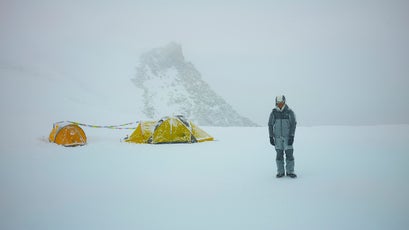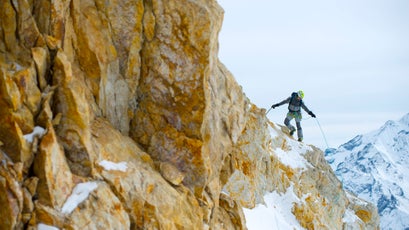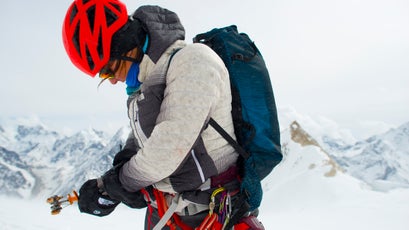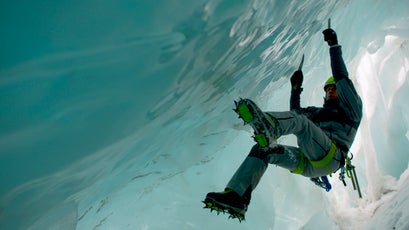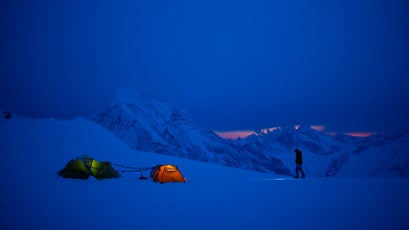The Nepal Experience
Filmmakers and climbers from The North Face capture a trip to the high peaks of the Himalaya in a 360-degree digital experience unlike any other
Renan Ozturk rigged a basketball-size spherical camera, with 16 lenses shooting in every direction, to a stabilization device on a knife-edge ridgeline at 22,000 feet in Nepal. He and a small film crew had just hauled this heavy, high-tech camera gear to the top of the Himalaya. Now it was time to capture what they saw in all its glorious detail: the roof of the world, including the jagged pinnacle of Mount Everest, in a 360-degree panoramic view.
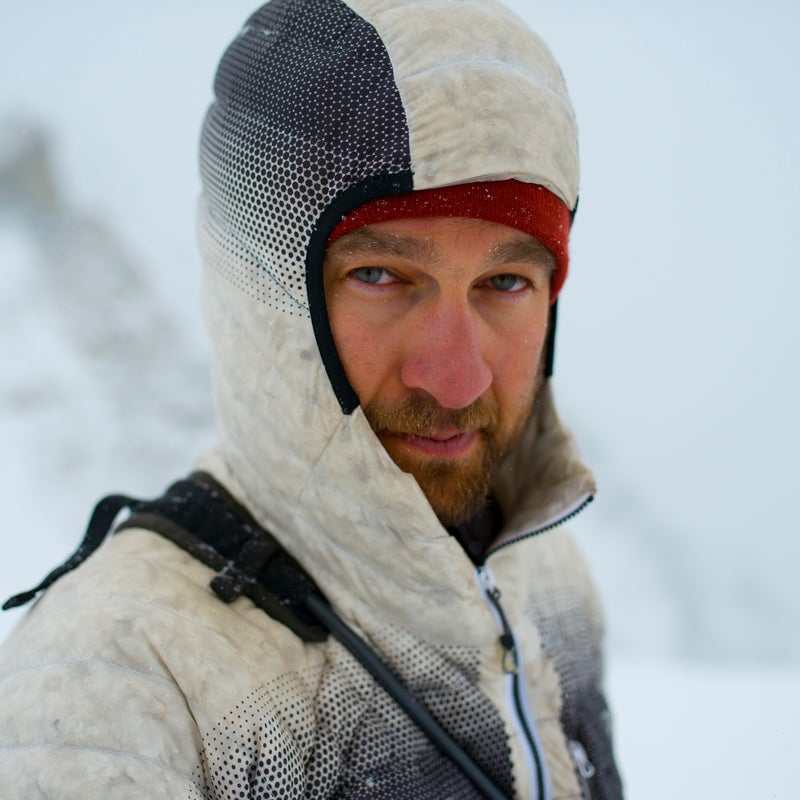
This was familiar territory for Ozturk, 35, a Salt Lake City–based expedition climber and filmmaker and the co-founder of the media agency , known for capturing imagery in some of the world’s most rugged locations. But when The North Face tapped him to make that trip to Nepal last February, it was essentially asking him to take a giant leap into the future of filmmaking.
The original task was to capture a journey from the chaotic streets of Kathmandu to the high peaks of the Himalaya from a climber’s perspective via a virtual-reality camera that captures both audio and visuals from 360 degrees. Then last April, just over a month after the crew departed the country, a massive 7.8-magnitude earthquake devastated Nepal, killing thousands of people and leaving much of the country in devastation. In an instant, the tenor of the project changed.
“After the earthquake, we knew we had to do something to pay homage to that. So the main message ended up being how important it is to return to Nepal and fuel their tourism industry,” Ozturk says. “The trick was to see how we could weave a story together rather than just showcase the images the VR camera could capture.”
The seed for the project began more than a year ago, when staffers at The North Face saw demos of VR at Stanford University’s Virtual Human Interaction Labs. Soon after, they were introduced to the team at , a virtual-reality startup in Palo Alto, California, led by a founder with a deep love for the outdoors. Immediately upon seeing what the technology was capable of, they wanted in.

“We’ve been capturing content on our expeditions for years,” says Eric Oliver, director of digital marketing for The North Face, “and being at the forefront of a new kind of filmmaking felt like a good thing for us to try.” Ozturk was equally excited to give the new technology a whirl, and Camp 4 Collective shot a pilot VR project of BASE jumpers in Moab and rock climbers in Yosemite last fall, which became a test case for Nepal.
Ozturk and his crew, which included Camp 4 Collective’s Anson Fogel and Tim Kemple, quickly realized that filming a 360 video is no easy task. After a shakedown climb testing new Summit Series product with fellow The North Face athletes Conrad Anker, Hilaree O'Neil, and David Göttler, they essentially had to reprogram how they think about filmmaking. “Normally you think about composing a shot, but with a 360-degree camera, everything’s in the frame,” says Ozturk. “So it’s more about picking the right environment to employ it, an environment that’s inherently three-dimensional and has things happening in all directions.”
In Nepal, with assistance from a technical advisor from Jaunt, they found plenty of such environments: a temple with swinging monkeys and flying birds, a threatening cliff at the end of the runway as a plane takes off from the Lukla airport, the cobbled streets and glacial moraines of Khumbu, the gateway to Everest, and a climber scaling a craggy face en route to the sky.
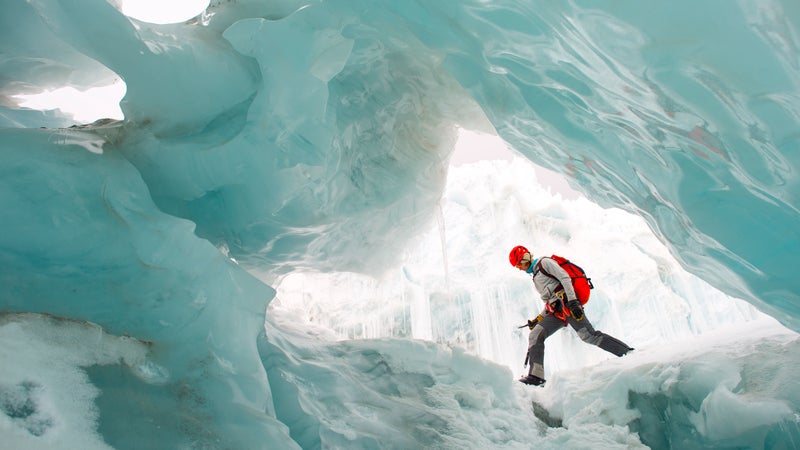
The challenges, from raging winds knocking the camera to invasive monkeys and numb fingers, were just as plentiful. Too much camera movement in a VR movie can nauseate the viewer, so you’ve got to stage the shot’s action around a heavily stabilized mounting rig. In other words, you’ve got to make the action dynamic by using new techniques. But when everything’s staged correctly, the results can be immersive. You decide what to see and which direction you’d like to look. You can notice a bird soaring through the air, turn your head and follow it as it soars off into the distance. Or you can admire the texture of the mountain. Or stare into the face of a hardworking Sherpa. You literally feel like you’ve been dropped into a bustling scene in Nepal.
The lenses, with their overlapping depths of field, simultaneously record 3-D synchronized video in all directions. All the data is then loaded into Jaunt’s software, which digitally compiles it into one seamless 3-D environment. “We take all the data from the camera and it goes to the cloud, where the computation makes sense of all the images from all the lenses and calculates a left eye image and a right eye image, so it represents what you’d actually see in the real world,” says Scott Broock, vice president of content deal development for Jaunt.
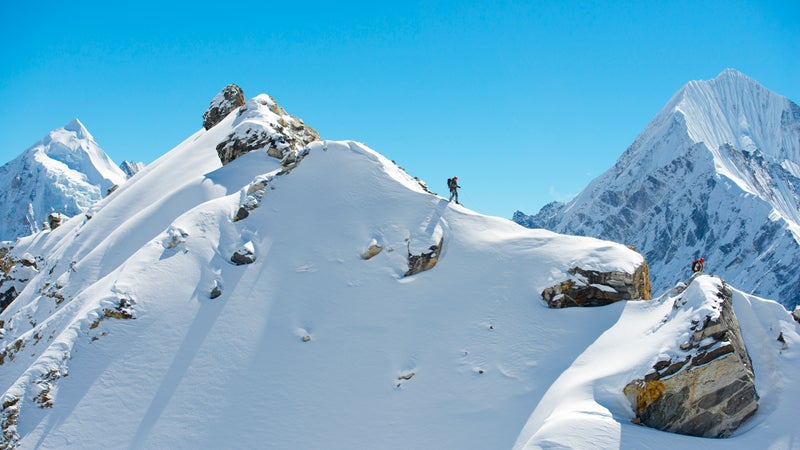
The audio is equally engrossing, thanks to a spherical reactive sound field fixed to the camera. Because it records in all directions (unlike, say, a boom mic), the sounds come at you as if in real life, from behind or off to one side. You can hear honking cars on the streets of Kathmandu, the trickle of a mountain stream, the laughter of children running on cobbled roads, and the gush of wind on a high ridge. Put it all together, along with a voiceover that speaks of Nepal’s enduring spirit and natural beauty, and the result is a love letter to a country that is equal parts breathtaking and inspiring. “The Nepal project is one of the best examples of what VR stands for. It captivates your senses,” says Broock. “You’re able to lose yourself in the experience. It’s entirely immersive.”
The North Face: Nepal
​To fully experience the interactive video below, view it in a Chrome Browser, ​which enables you to either click the arrows on the navigation button or click and drag anywhere on the video with your mouse to rotate your view and expand the video frame.
The YouTube 360 version of the video above, which has you manually control the screen to change your perspective, offers only a hint of what a true virtual-reality video looks and sounds like. To fully experience the immersive nature of the technology, you need two things: a smartphone app and a virtual-reality viewer. The Jaunt app can be downloaded from the or . Once you have the app, click on “The North Face: Nepal” and insert your phone into a viewer, which you can buy here. (If you were one of 75,000 lucky ąú˛úłÔąĎşÚÁĎ subscribers, you received a in your mailbox, polybagged with your December issue.)
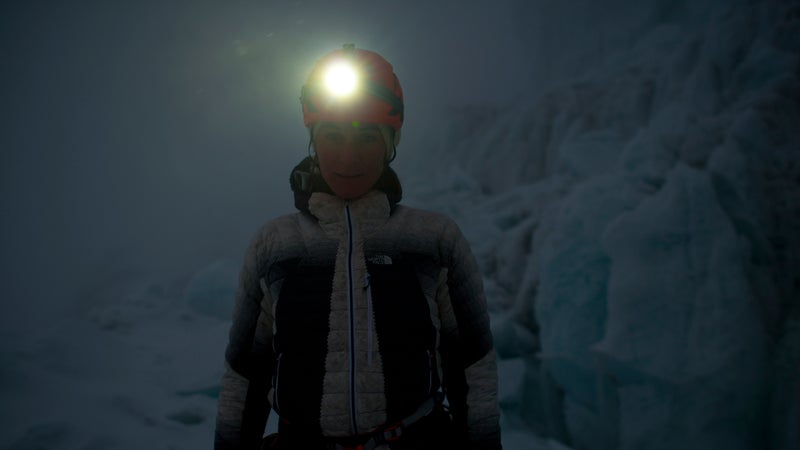
“When you put the phone in a viewer, it feels like you’re there,” says Oliver. “It’s never going to replace the real deal, but when you move your head, the video tracks with you.” Instead of sitting back and passively watching something, you become an active participant in the story. “To see people’s reactions when they put it on for the first time and realize they can turn around and see things in all directions, it’s pretty incredible,” says Ozturk. “Everyone can have their own unique viewing experience.”
Oliver says watching the video shouldn’t replace a real-life trip to a place, but perhaps it’ll instigate one. “As a brand, we’re trying to inspire people to get outdoors and explore. We hope this experience is intense enough that it might inspire someone to actually go there,” says Oliver. “Our storytelling should be pushing the technology envelope and VR is a great way to do that.”
Virtual-reality cinematography may still in the early-adoption phase, but that’s about to change. “There’s a lot of potential with VR, especially with current events,” Ozturk says. “Imagine taking this into a war zone or environmental crisis and conveying to people what’s actually going on. There’s a lot of power in this technology that hasn’t been utilized yet.”


